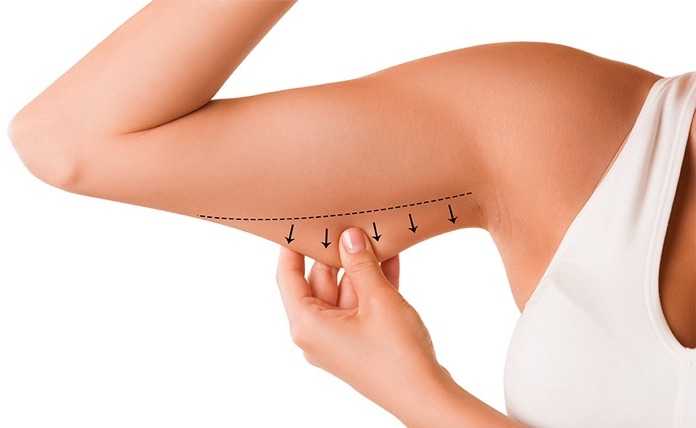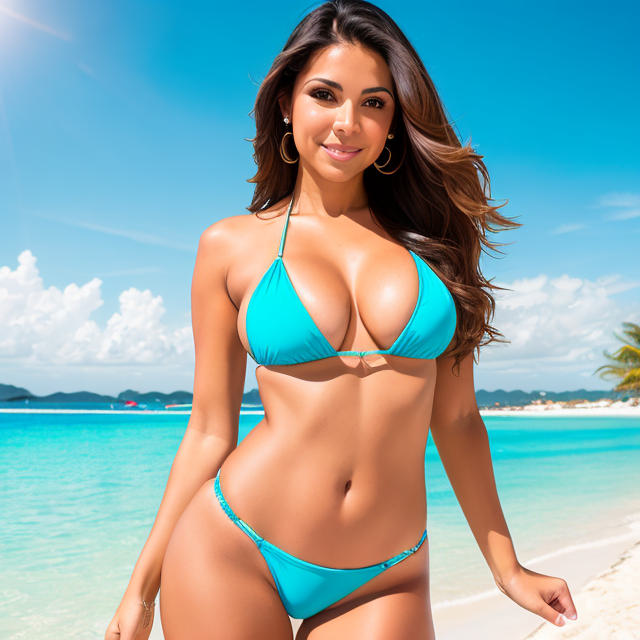Breast implants have become a widely discussed topic, often associated with both cosmetic enhancement and reconstructive purposes. They represent a significant decision for individuals seeking to alter their body image. This post delves into the intricacies of breast implant options, safety considerations, and the impact on personal well-being. Understanding these factors is crucial in making an informed choice that aligns with one’s health goals and aesthetic desires.
Understanding Breast Implant Warranty Basics
Warranty Definition
Breast implant warranties are protection plans. They safeguard against certain issues that may arise after surgery. The purpose is to give patients peace of mind. It assures them they won’t face high costs if a problem occurs.
Warranties cover defects and other specific concerns related to the implants themselves. For example, if an implant ruptures or deflates due to manufacturing flaws, the warranty often steps in.
Coverage Duration
The length of coverage can vary widely. Most breast implant manufacturers offer warranties that last for 10 years or more. This duration ensures long-term confidence in the quality of their product.
Some companies might extend this period under special conditions or programs. Patients should check their individual warranty details carefully.
Basic Inclusions
Basic warranty coverage typically includes:
-
Replacement of the defective implant.
-
Partial financial assistance with surgery costs.
This basic protection helps reduce unexpected expenses from complications directly linked to the implants’ integrity.
However, it’s important to note what is not covered as well:
-
Costs unrelated to the actual implants, like hospital fees.
-
Complications arising from factors outside of manufacturing defects.
Patients must understand these exclusions before proceeding with surgery.
Key Features of Breast Implant Warranties
Rupture Coverage
Breast implants are durable, but not indestructible. Implant rupture or deflation is a concern for many patients. Most warranties from implant manufacturers cover this eventuality.
If an implant breaks or leaks, the warranty typically provides a replacement at no cost. This gives patients peace of mind knowing they have protection against such defects.
Replacement Provisions
Over time, breast implants may need to be replaced due to wear and tear or other complications. Warranties often include provisions for replacement implants in case of failure.
Manufacturers usually offer free replacements within a certain time frame after the initial surgery. This aspect of the warranty ensures that patients won’t face the full financial burden if their implants fail prematurely.
Financial Assistance
The cost of breast implant surgery can be significant. Many warranties provide some form of financial assistance for surgery costs under specific conditions.
Some programs help with expenses related to implant failure issues like surgical fees or anesthesia costs. These benefits vary between manufacturers but can significantly reduce out-of-pocket expenses during warranty-covered events.
Comparing Manufacturer Warranty Terms
Coverage Length
Manufacturers offer varying warranty periods. Some may provide coverage for a decade, while others extend it further.
Breast implant manufacturers often have different lengths of warranty coverage. This is crucial as it determines how long you are protected against certain defects or issues. For example, one manufacturer might offer a 10-year warranty, whereas another could extend this to a lifetime for specific conditions. It’s important to note the start date of these warranties as well; typically, they begin on the surgery date.
Defect Definitions
What counts as a defect varies by brand. Each company has its own standards.
Understanding what each breast implant manufacturer considers a “warranty defect” can be challenging but essential when comparing options. Manufacturers define defects in their terms and conditions which means some may cover issues like rupture or capsular contracture, while others might not consider these as warrantable events unless they meet certain criteria.
Claim Process
The ease of claiming varies across brands too. Some make the process straightforward; others do not.
When an issue arises with your breast implants that may fall under warranty, navigating the claim process is your next step. Here’s where you’ll find significant differences among manufacturers—some will have clear-cut procedures that facilitate quick resolutions, whereas others might require more extensive documentation or have lengthier review times before approving claims.
-
Clear instructions: Look for brands that provide simple steps to follow.
-
Documentation requirements: Be aware of what paperwork you’ll need to submit.
Unique Warranty Features by Brand
Capsular Contracture
Breast implants come with warranties. Some brands cover capsular contracture, a condition where scar tissue forms around the implant. This can cause discomfort and distortion, requiring surgery.
Certain manufacturers stand out for including this coverage in their warranties. They understand that peace of mind is crucial for patients. With this feature, they offer added value to their products.
Contralateral Replacement
Another important aspect is the replacement of the opposite breast implant or contralateral implant. Not all brands include this in their warranties, but those who do provide significant benefits.
This means if one implant has issues, both may be replaced to ensure symmetry and satisfaction. It’s an example of how some companies go further to meet patient needs.
Additional Perks
Some manufacturers offer unique perks like travel benefits within their warranty packages. These are designed to support patients who need revisions far from home.
These extra services can include reimbursement for travel costs related to corrective surgery. Only select companies provide such comprehensive care through their warranty programs.
The Role of Warranties in Patient Decisions
Warranty Influence
Patients often weigh the warranty terms of breast implants before making a choice. A solid warranty can sway a decision toward one brand over another. Patients look for assurances that their investment is protected. If two brands offer similar quality, but one provides a better warranty, that could be the deciding factor.
Warranties vary in length and what they cover. For example, some may cover implant replacement in case of rupture for a lifetime while others have limited coverage periods. These details matter to patients who want security for the long term.
Coverage Comprehensiveness
The breadth of warranty coverage is crucial for patients considering breast implants. They examine how comprehensive the policy is—does it include costs like surgery fees or only the implant itself? Some warranties might also offer additional benefits such as financial assistance during revision surgeries which can be very appealing.
Patients tend to prefer warranties that provide extensive coverage because it reduces future financial risk. They feel more comfortable knowing they won’t face unexpected expenses if something goes wrong with their implants.
Brand Trust
Reliable warranties build patient trust in an implant brand. When companies stand behind their products with strong warranties, it signals to patients that they are confident about product quality and customer satisfaction.
Trust grows when patients see real examples of brands honoring their warranty promises without hassle.
-
Quick response times
-
Efficient problem resolution processes
These experiences get shared within communities, influencing others’ perceptions and decisions about breast implant brands.
Impact of Warranties on Long-Term Costs
Savings Over Time
Robust warranty programs for breast implants can lead to significant savings. These warranties often cover the cost of the implant and part of the surgery if a replacement is needed due to a defect or failure. Patients with these warranties avoid paying full price again, which can be quite costly.
However, not all complications may be covered by warranties. Some patients might face unexpected expenses if they experience an issue that falls outside their warranty terms. It’s important to understand exactly what is covered before deciding on an implant.
Uncovered Complications
Warranties that do not encompass certain complications leave patients vulnerable financially. If a patient encounters a complication like capsular contracture or rupture that isn’t covered, they could incur high costs for revision surgery and new implants.
This situation highlights why reading and understanding the fine print in warranty documents is crucial. Knowing what’s included can save patients from surprise bills later on.

Transferable Benefits
Transferable warranties offer long-term financial advantages. They remain valid even if ownership changes, such as when selling an item second-hand. In the context of breast implants, transferability means that if a patient sells her implant (in situations where this is permitted), the warranty benefits go along with it.
This feature provides peace of mind and potential financial assistance should future issues arise after transferring ownership. Not all warranties are transferable though; hence it’s another detail to check when considering options.
Choosing the Right Surgeon for Warranty Fulfillment
Surgeon Selection
Selecting a plastic surgeon who understands warranty processes is crucial. Your surgeon should be your ally in navigating warranty claims. They must know how to properly document and facilitate these claims.
A good plastic surgeon will explain the warranty during your initial consultation. They ensure you understand what is covered, from surgical fees to implant replacement costs. Choose someone with experience in handling warranties post-surgery.
Experience Matters
Experience with implant warranties is a key criterion when choosing your surgeon. An experienced plastic surgeon will have a plan ready for any issues that may arise after surgery.
They should also help you purchase the right warranty that meets your needs. This includes explaining terms and guiding you through acquisition of additional coverage if necessary.
Handling Breast Implant Issues Post-Surgery
Issue Identification
After surgery, you might notice changes in your breast implant. It’s crucial to identify these changes early. Look for signs like discomfort, shape alterations, or swelling. If you spot issues, act quickly.
Firstly, consult your surgeon. They can assess if what you’re experiencing is expected or needs attention. For serious concerns like pain or asymmetry that persists beyond the normal healing period, seek medical advice immediately.
Documentation Process
Gathering evidence is essential when facing breast implant problems post-surgery. Start by taking photos of any visible issues with your implants as soon as they arise.
Keep a detailed record of symptoms and dates they occurred. This log will be vital when filing a warranty claim for your breast implants.
Warranty Claims
To file a successful warranty claim on breast implants:
-
Report the problem promptly.
-
Provide comprehensive documentation.
-
Follow the specific guidelines set by the implant manufacturer.
Most warranties have a strict timeframe for reporting issues to ensure coverage—often within ten years post-surgery for many manufacturers.
Contact the maker of your implants directly after discussing with your surgeon about potential defects or complications that need addressing under warranty terms.
Closing Thoughts
Breast implant warranties play a crucial role in safeguarding patients’ investments and health. This article has outlined the essentials of warranty coverage, dissected key features, compared terms across manufacturers, and highlighted unique brand-specific benefits. It underscores the importance of understanding warranty implications for long-term costs and decision-making in cosmetic surgery. Warranties are not mere afterthoughts but integral components that reflect the quality and reliability of both product and surgical expertise. Patients must consider these factors carefully alongside choosing a competent surgeon who can ensure warranty fulfillment.
The journey to aesthetic enhancement through breast implants demands attention to detail and informed choices. Readers are encouraged to review warranty specifics, evaluate surgeon credentials, and weigh the long-term financial aspects before proceeding. If you’re contemplating breast augmentation, take the next step: consult with certified professionals to discuss your options within the context of comprehensive warranty coverage.
Frequently Asked Questions
What does a breast implant warranty typically cover?
Breast implant warranties generally cover implant defects and, in some cases, the costs associated with replacement surgery for a certain period post-implantation.
How do breast implant warranties differ between manufacturers?
Warranty terms vary by manufacturer, including coverage duration, what’s covered (e.g., rupture or capsular contracture), and whether surgical fees are included.
Are there unique features in breast implant warranties I should know about?
Yes, some brands offer unique features like extended coverage for specific complications or financial assistance towards surgery if an issue arises within the warranty period.
Do warranties influence patient decisions on breast implants?
Yes, the scope of warranty protection can significantly affect patient choices by providing peace of mind regarding potential future complications and costs.
Can a warranty impact long-term costs of having breast implants?
Absolutely. A comprehensive warranty may reduce long-term expenses related to maintenance or unexpected issues with the implants.
Why is surgeon selection important for warranty fulfillment?
Choosing a qualified surgeon ensures proper procedure follow-up and adherence to warranty stipulations should you need to claim it later on.
What should I do if I encounter an issue with my breast implants post-surgery?
Contact your surgeon immediately. They will guide you through steps to address the problem and inform you about utilizing your warranty if applicable.




















